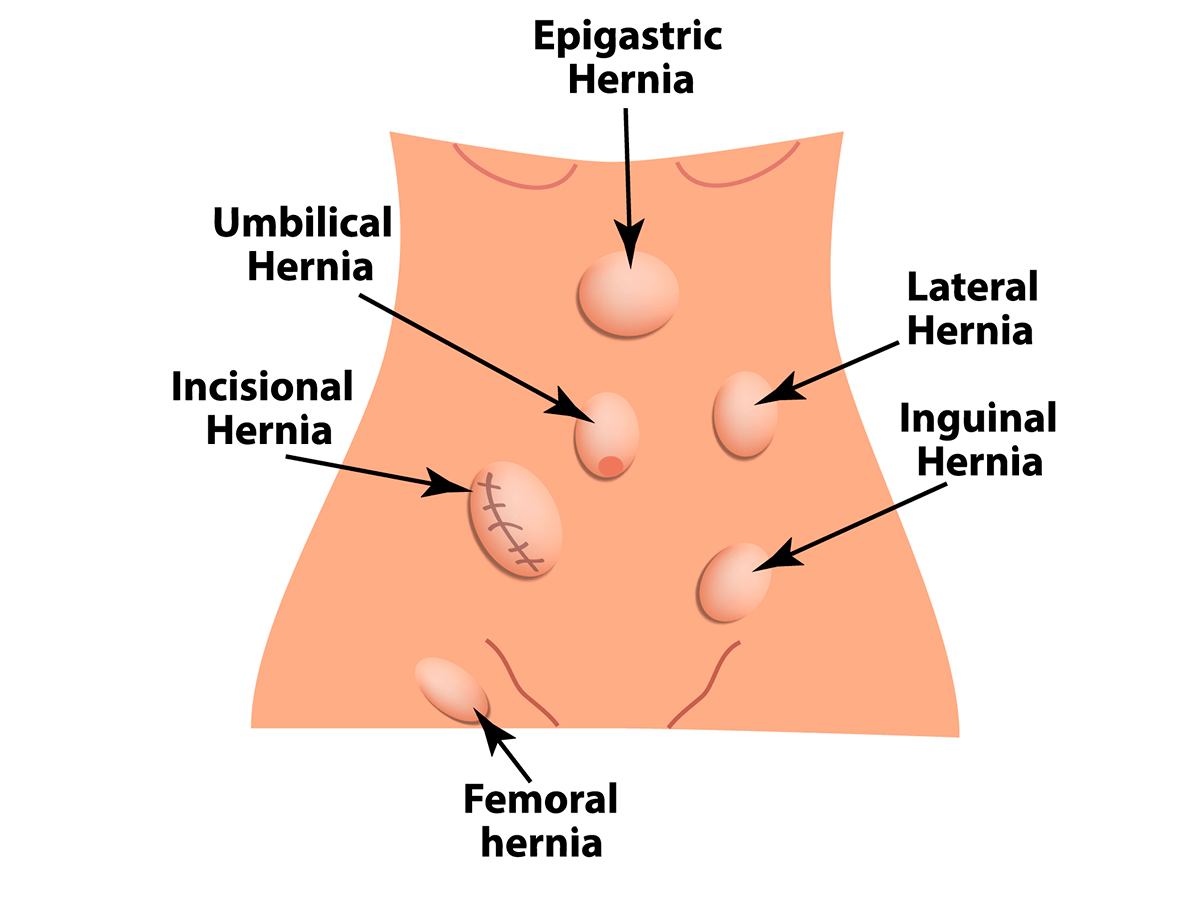- +52 664 761 5349
- contact@tijuanasurgery.com
- Paseo de los Héroes 9211 Edificio Xtal Zona Rio Tijuana BC México 22010

An abdominal wall hernia is an opening or area of weakness in the abdominal wall through which abdominal contents can protrude.
Abdominal wall hernias (also called abdominal hernias) include the following:

Affected persons usually notice the presence of a bulge in the area where the hernia is located. Sometimes, the hernia appears only when lifting, coughing or straining. It usually causes little or no discomfort, and the bulge can be pushed back inward (reducible hernia) by the affected person or by the physician.

An incarcerated (incarcerated) hernia is usually more painful and the bulge cannot be reduced.

A strangulated hernia causes constant pain that gradually increases, typically with nausea and vomiting, cannot be reduced and is painful to the touch.
Abdominal wall hernia surgery is currently a safe, comfortable and recommended method for most patients. It is performed through a small incision inside the area of the abdominal wall hernia with very good functional and aesthetic results.
During the abdominal wall hernia repair, regional anesthesia is administered to the patient, the procedure most of the times can be performed on an outpatient basis and the patient can leave the same day and return to work and normal life a few days later.
Dr. Javier Cisneros Lopez is a general surgeon specializing in inguinal hernia in the city of Tijuana, Baja California Mexico with 26 years of experience and more than 7,000 procedures performed. If you have any symptoms or doubts about your health, schedule an appointment here to receive medical attention appropriate to your condition.
They are the outflow of contents from the abdominal cavity, through a weakened hole in the abdominal wall. They can occur in any part of the abdominal cavity including the umbilical region. If there is a previous abdominal surgery and there is a bulge, it is known as ventral hernia.
By the appearance of a lump anywhere in the abdomen and umbilicus that increases in size with increased intra-abdominal pressure (coughing, sneezing, exercise, pregnancy, etc.) and may disappear with decubitus. It may cause discrete pain and deformation of the abdominal and umbilical region.
If this tumor becomes irreducible (does not disappear) or very painful, it may be a case of incarceration (entrapment of its contents, which can become an intestinal loop) and in this case, urgent consultation is necessary.
As I mentioned above, the main diagnostic sign is the appearance of a lump in the abdominal and/or umbilical region. Diagnosis is simple, by examination by a general surgeon. It usually does not require any complementary exploration for its diagnosis.
The only treatment that solves an abdominal wall hernia is surgical. It can be performed as minimally invasive open surgery and by laparoscopic surgery.
This technique can be performed under regional or general anesthesia, but it is usually performed under regional anesthesia. It requires a minimum hospital stay of 4 to 6 hours as outpatient surgery.
According to published studies, recurrence (the appearance of a new hernia) is less than 5% in 5-year follow-ups. Although it is true that there are factors that increase this percentage, such as:
The vast majority of patients can lead a normal life 48 hours postoperatively. It is recommended not to perform abrupt exercise during the first month, since this is the minimum healing time.
Contact information
Copyrights ©2022 – Tijuana Surgery Center